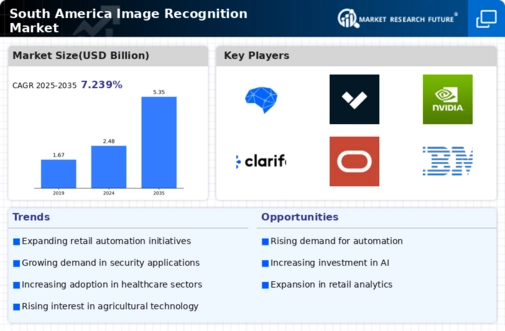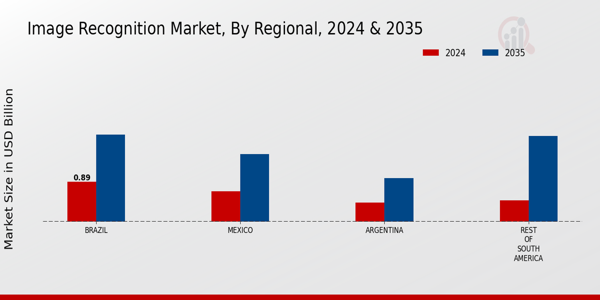The South America Image Recognition Market is experiencing substantial growth, which is being driven by a diverse array of key market drivers. The rapid advancement of artificial intelligence technologies, which enhance the accuracy and efficacy of image recognition systems, is one of the primary drivers. Furthermore, the demand for image recognition applications in a variety of sectors, including security and retail, is being bolstered by the increasing prevalence of smartphones in the region.
Government initiatives that promote digital transformation are also on the rise in the region, which promotes the adoption of innovative technologies such as image recognition. In sectors such as healthcare, agriculture, and telecommunications, there are numerous opportunities to be investigated in South America. For example, image recognition has the potential to improve diagnostic processes in healthcare, expedite customer service in telecommunications, and improve vegetation monitoring in agriculture, thereby creating significant growth opportunities for companies in this field.
Recently, there has been a substantial rise in the number of partnerships and collaborations between businesses that are attempting to optimize their consumer experiences by utilizing image recognition technology. Augmented reality and image recognition are also being integrated by companies to create more interactive applications that are specifically designed for South American consumers. Visual search technologies have experienced a significant increase in demand within the e-commerce sector, enabling consumers to locate products through images rather than text queries.
Furthermore, the increasing emphasis on data privacy and security regulations in numerous South American countries is compelling companies to implement ethical and responsible strategies in their image recognition applications. Consequently, the South American Image Recognition Market is undergoing a rapid transformation, which is a reflection of both global technological advancements and regional requirements.










